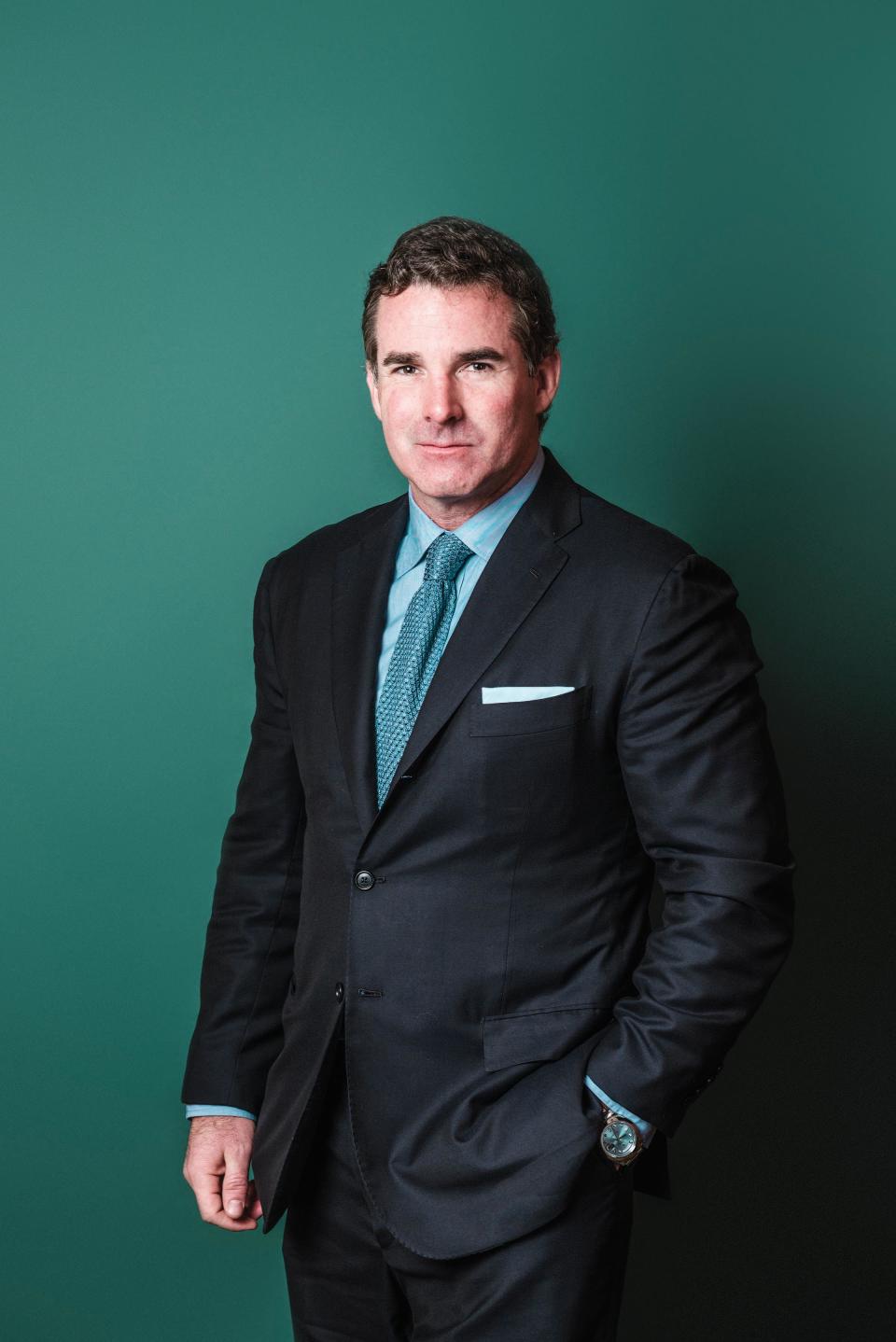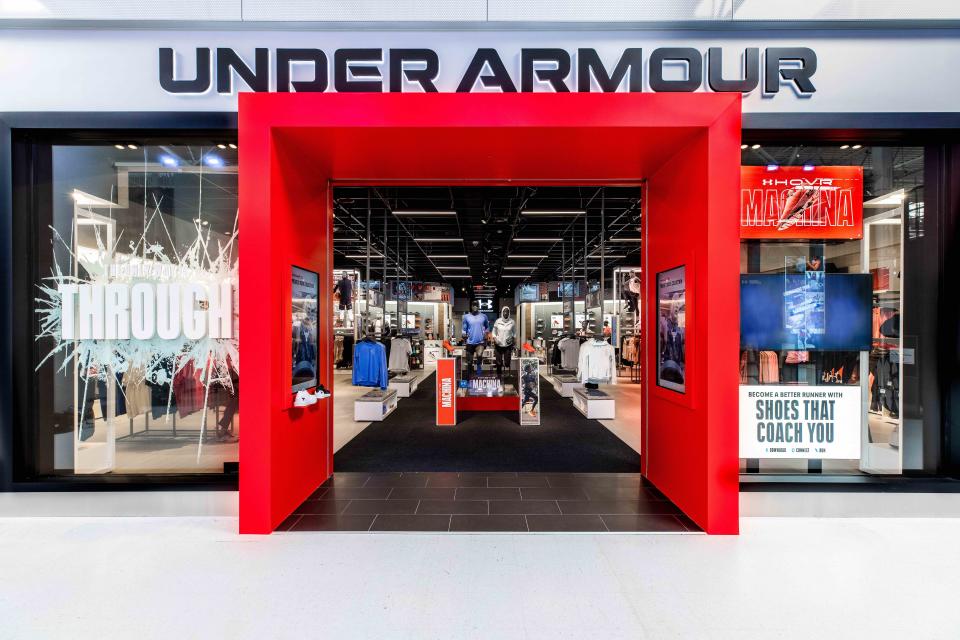Under Armour Outlines Painful Restructuring Plan Including Layoffs, Product Reduction and Fewer Promotions

Kevin Plank is back and he’s not happy.
In his first earnings call since returning to Under Armour as its chief executive officer, Plank laid out a significant restructuring plan that will include an unspecified number of layoffs, a 25 percent reduction in product, a renewed focus on its historic strength in menswear, substantially less discounting and a new communication strategy to get the message out to consumers.
More from WWD
This plan will be painful to the company and its investors in the short term, with pre-tax restructuring charges expected to be between $70 million and $90 million and no rebound expected for at least 18 months.
The restructuring news came after Under Armour reported net income of $6.5 million in the fourth quarter, down markedly from earnings of $170.6 million a year earlier. Still, adjusted earnings per share of 11 cents came in better than the 7 cents analysts were projecting, according to Yahoo Finance.
Revenues for the three months ended March 31 slipped 4.7 percent to $1.33 billion from $1.4 billion. Apparel sales dipped 1 percent to $877 million, footwear sales dropped 11 percent to $338 million, and accessories were down 7 percent to $89 million.
In the year, revenue was down 3 percent to $5.7 billion, and net income was $232 million, down from $374 million the prior year.
For fiscal 2025, overall sales are expected to be down in the low double digits, and adjusted earnings per share are expected to tally 18 cents to 21 cents, well below the 59 cents analysts forecast on average. The stock closed down 1.3 percent to $6.71 on Thursday.
“Due to a confluence of factors, including lower wholesale channel demand and inconsistent execution across our business, we are seizing this critical moment to make proactive decisions to build a premium positioning for our brand, which will pressure our top and bottom line in the near term,” Plank said. “Over the next 18 months, there is a significant opportunity to reconstitute Under Armour’s brand strength through achieving more by doing less and focusing on our core fundamentals: driving demand through better products and storytelling, running smarter plays like simplifying our operating model, and elevating our consumer experience. In parallel, we’re focused on cost management and implementing the strategies necessary to grow our brand and improve shareholder value as we move forward.”

The restructuring is going to be felt in every part of the company. North America, Under Armour’s largest market, is expected to have a sales decline of between 15 percent and 17 percent in fiscal 2025 as the company repositions itself at a more-elevated level and reins in promotions, he said. International sales are expected to be down in the low-single digits, wholesale sales are similarly seen dropping in the low-single digits, and direct-to-consumer sales are expected to be down about 10 percent as Under Armour reduces markdowns within its own e-commerce channel.
Apparel and footwear sales are expected to be down in the low double-digit range, he said, with accessories remaining flat year-over-year. But the company is projecting a gross margin improvement of 75 to 100 basis points due to the planned reduction in discounting and better product offerings.
In his first remarks since returning to the top post of the company he founded in his grandmother’s basement in 1995, Plank said his top priority is to bring “clarity and stability” to the business that he characterized as one of just three or four global brands that have the credibility of being recognized worldwide as an authentic on-field, court and pitch athletic performance brand.
But Plank doesn’t expect to run the same plays as he did when starting the company because the climate today is much different.
In his prepared remarks, Plank said innovation will remain at the core of the business. He pointed to the six new footwear drops the company released in February as an example, including Infinite Pro, Infinite Elite and SlipSpeed Mega. “The larger problem is that you probably never heard about any or most of them,” he said. “We’ll make sure that if a product is important enough for us to make and release, it’s also important enough to celebrate with storytelling or we just won’t make it.”
He said in North America, Under Armour has become a brand that “competes primarily on price versus our core competency, which is performance and technical innovation, an aspect of UA that has frankly gone untold for too long.”
But that storytelling will take place on a lot less product. He pointed to the company’s newly named chief product officer Yassine Saidi as the person who will serve as the gatekeeper. The style count will be reduced by 25 percent over the next 18 months, Plank said, with a focus on eliminating discount product and expanding the more-elevated merchandise.
“Too many areas of our product strategy have been designated as priorities,” Plank said. “This has caused operational inefficiency and a strain on resources, which has diluted our ability to have a consumer-centric point of view, consistent storytelling and an effective go-to-market process. Over the past few years, it’s also evident that we took our eyes off our core men’s apparel business, which, particularly in North America, has permitted this business to become more promotional and commoditized. That has significantly impacted our brand’s perception. We will rectify this. This focus does not mean that we are de-prioritizing our footwear or women’s business per se, but from a sequencing perspective, men’s apparel will be our highest priority.”
The company will also concentrate its efforts on its core sports of football, soccer, baseball, softball, volleyball and lacrosse.
He complimented Under Armour’s chief design officer, John Varvatos, whose first product for the company will begin hitting the market shortly, as well as Yuron White, a 25-year sports industry veteran, who recently joined Under Armour as senior vice president of sportswear, running, basketball/Curry and collaborations, as key to the future.
“I think we have a really clear point of view of…what success looks like. Now it’s up to execution.”
Plank will work to quicken Under Armour’s speed-to-market. He said right now, it takes 18 months for a product to move from an idea to the selling floor, which he said is “just plain uncompetitive in a 2024 landscape.” Instead, the company will pursue a six- to 12-month turnaround.
Under Armour expects to enhance the messaging in its own channels as a way to show its wholesale partners — wholesale accounts for 60 percent of sales — “what excellence can look like for the Under Armour brand.” Toward this end, the company will “dramatically overhaul our product descriptions and hang tags,” he said, “to tout our product attributes” and answer these questions: “what it is, what it does and how it will make them better.”
But creating innovative products can fall short without a strategic marketing plan to tout their attributes and Under Armour is currently searching for a chief marketing officer to lead that charge.
Plank said that over the past four years when he served as executive chairman and not CEO, “the company has become overly siloed and bureaucratic with competing internal agendas. We now have just one agenda…and my immediate priority…is to disband these siloes and drive a more-productive collaborative culture.”
This will result in a streamlining of the organization with a focus on the simplest of missions: “selling more shirts and shoes.” Plank did not say how many layoffs are planned or in what areas and a spokesperson said the company was not providing specifics beyond Plank’s remarks.
Turning to North America, Plank said the anticipated decline in sales in fiscal 2025 is due partially to “retailer cautiousness and softer consumer demand in an intensely competitive environment,” as well as to the company’s own “inconsistent execution,” exacerbated by discounting in its own DTC channels. He said there will be 50 percent fewer site-wide promotional days in fiscal ’25 along with a reduction in the size of the discounts as the company transitions into a “significantly more premium platform over the next 18 months.”

The amount of merchandise in its 183 outlet stores, which account for nearly $1 billion in sales, will be reduced as well and its full-price Brand House doors will “become a premium showcase for the Under Armour brand.”
Outside the U.S., Plank cited a softer wholesale outlook in the U.K., its largest market in Europe, but “significant long-term growth potential” in Asia.
Despite Plank’s long and detailed explanation of his turnaround strategy, the reaction on Wall Street was mixed with most analysts saying they believe the company is moving in the right direction, but citing that it will undoubtedly take some time before the effects are realized. The stock closed down 1.3 percent to $6.71 on Thursday.
Simeon Siegel of BMO Capital Markets rated the stock as outperform, noting that there will undoubtedly be initial share pressure, “but this may signify a material step in the right direction.”
Citing a fiscal 2025 outlook well below Wall Street expectations, Sharon Zackfia of William Blair downgraded the company from outperform to market perform, saying: “While the goal of resetting the brand to a more premium positioning while narrowing the focus to core fundamentals could very well prove to be a meaningful catalyst over the longer term, the reality is that this will take time to unfold.”
Neil Saunders, managing director of GlobalData, said Under Armour can only blame its poor performance on itself since other sports brands such as On Running and Lululemon have been doing well.
Plank took over as CEO on April 1, succeeding Stephanie Linnartz, the former president of Marriott International who had been named president and CEO just over a year earlier. Linnartz remained with the company as an adviser through April 30 and received a severance package of $2.6 million in cash, eqaul to two times her base salary, as well as a performance bonus, vesting of stock worth $7.3 million as of their grant date, payment of her health benefits for 24 months and payment of the lease of her Baltimore apartment through the middle of this year.
Best of WWD

 Yahoo Finance
Yahoo Finance 